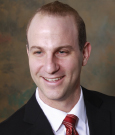On April 30, 2014, the Centers for Medicare & Medicaid Services (CMS) convened the Medicare Evidence Development & Coverage Advisory Committee (MEDCAC) to assess the value of low-dose computed tomography (CT) lung cancer screening in the Medicare population. After a decades-long battle, lung cancer advocates were confident that the evidence proved that screening was a cost-effective way to save thousands of lives each year. Surprisingly, the MEDCAC panel gave very low confidence scores for lung cancer screening, which further confounds the ongoing debate over Medicare reimbursement.
Focus on the Negatives
In December 2013, the U.S. Preventive Services Task Force (USPSTF) issued a grade B recommendation, endorsing annual low-dose CT screening in high-risk, asymptomatic adults. The Task Force—considered the “gold standard” for clinical preventive services—based its recommendation largely on results of the National Lung Screening Trial (NLST).
Under the Affordable Care Act, private insurers must cover any procedure that receives a grade B recommendation from the USPSTF. However, the Affordable Care Act preventive services coverage clause does not apply to Medicare, the population that would most benefit from lung cancer screening. This dichotomy in coverage policy adds one more layer of frustration to this already difficult public health debate.
“The MEDAC decision is surprising and disappointing. Keep in mind, the NLST was one of the largest, cleanest lung cancer screening studies ever performed and established firm evidence that CT screening reduces lung cancer mortality. In this study, the number needed to screen to save a life was 320, which is comparable to other cancer screening modalities,” said Benjamin P. Levy, MD, Director of Thoracic Medical Oncology at Mount Sinai Beth Israel Hospital, New York, and a member of ASCO’s Integrated Media and Technology Committee.
Dr. Levy continued, “Not endorsing a modality that saves lives is a missed opportunity. It is estimated that if CT screening were implemented appropriately it would save anywhere from 4,000 to 12,000 patients a year. Clearly, the panelists took issue with some of the well-known shortcomings of the NLST study, such as the high false-positive rate. I don’t want to minimize these concerns, because they are valid. However, I believe that in short time, quality assessment measures will refine and address these limitations.”
Dr. Levy emphasized that detecting and treating early-stage lung cancer saves lives and downstream costs. He sensed that the MEDCAC panel was overly concerned about the logistical challenges of conducting high-quality screening programs outside of the clinical trial setting. “Again, the concerns voiced by MEDCAC are real, but they can be addressed. Considering the public health benefit at stake, I think we should take a leap of faith in the system and move forward with screening. One has to wonder if the long-held stigma associated with lung cancer influenced the panel members. Would the debate be in this same place if it were centered on breast cancer?” said Dr. Levy.
Major Organizations Back Screening
It is important to note that more than 40 medical organizations, including the Lung Cancer Alliance, the Society of Thoracic Surgeons, and the American College of Radiology, petitioned CMS to provide national Medicare coverage for lung cancer screening. Moreover, based largely on the results of the NLST, the National Comprehensive Cancer Network (NCCN) recommended lung cancer screening, which is a significant endorsement given that in 2008, CMS recognized the NCCN compendium in its coverage decisions.
The MEDCAC meeting, which was conducted on a single working day, featured presentations by Peter Bach, MD, Director of Memorial Sloan Kettering Cancer Center’s Center for Health Policy and Outcomes, Laurie Fenton Ambrose, President and CEO of the Lung Cancer Alliance, and lung cancer experts James L. Mulshine, MD, Associate Provost for Research and Director of the Translational Sciences Consortium at Rush Medical College, Rush University, Claudia I. Henschke, PhD, MD, Head of Lung and Cardiac Screening at Mount Sinai Medical Center and principal investigator for the Early Lung Cancer Action Project (ELCAP) studies, and Ella A. Kazerooni, MD, Professor of Radiology at University of Michigan Health System and Chair of the American College of Radiology (ACR) Lung Cancer Screening Committee.
“Without national Medicare coverage for CT lung cancer screening, seniors face a two-tier coverage system in which those with private insurance will be covered for these exams and many of their lives saved, while Medicare beneficiaries are left with lesser access to these exams and placed at increased risk of dying from lung cancer,” Dr. Kazerooni told The ASCO Post.
Asked about the structure of the meeting, Dr. Kazerooni replied, “We only had 1 day to present our data. The morning session consisted of presentations, which in the end gave us only 90 minutes to debate this issue, which was not nearly enough time to have meaningful dialogue and rebut MEDCAC’s questions on safety, quality, and the ability to generalize screening programs outside the clinical trial setting.”
To the panel’s lack of confidence in quality programs conducted outside of the clinical trial setting, Dr. Kazerooni responded, “People have the misconception that the entire NLST study was performed in tertiary care academic centers, when in fact about 25% of the centers involved were not academic medical centers.”
She continued, “In NLST, the follow-up testing done on positive screens could be performed anywhere. NLST made some general recommendations, but there was no algorithm recommended for follow-up of positive screens. So if you were part of NLST and had a positive screen and you lived in a big city like Chicago or New York, it’s most likely that your follow-up was done outside of the screening center.”
Standardized Reporting
On May 1, the ACR released the first edition of its Lung Imaging Reporting and Data System (Lung-RADS), a quality assurance tool for the standardized reporting of lung-cancer CT screening studies. Lung-RADS features a number-based rating method similar to the college’s successful Breast Imaging-Reporting and Data System (BI-RADS) for mammography reporting.
As Lung-RADS primary author, Dr. Kazerooni commented, “I talked about Lung-RADS in my MEDCAC presentation, and I was also able to briefly touch on the program during the discussion portion of the meeting. However, as I mentioned, there simply was not enough time to fully explain how the program standardizes the quality and reporting.”
She added, “The committee that developed Lung-RADS studied the NLST and ELCAP databases to see how we could reduce the false-positive rates in lung screening. Our preliminary observation showed that using Lung-RADS would reduce the false-positive screen rates from 1 in 4 to about 1 in 10. This is a very good number, and we arrived at this place because of our increased ability to detect malignant from benign nodules.”
Dr. Kazerooni commented that along with not having enough time to make their case, the MEDAC panelists were not conversant in the field of radiology, radiation oncology, and medical imaging, making their task even harder (see sidebar, MEDCAC Panel). Looking forward, Dr. Kazerooni remarked, “CMS will take MEDCAC’s recommendations into consideration when it puts out a draft of its national coverage decision for low-dose CT screening by mid-November, followed by a 30-day public comment period before it’s finalized. So, we need to continue the dialogue with Medicare on issues like radiation exposure, quality reporting and accreditation in the community, and all the other issues that I think when combined, will lead to a favorable coverage decision.”
Medicare Population Data Questioned
At the end of the day, which by all accounts was at times contentious, the nine member MEDCAC panel voted on a scale of 1 to 5 on whether they were confident that the benefits of low-dose CT lung cancer screening would outweigh the harms in the Medicare population (see sidebar). The mean score was 2, which represents low confidence. During the prevote discussion, the MEDCAC panel members voiced concerns about the potential for overdiagnosis and a high frequency of false-positives, which would result in additional workups, patient anxiety, and far too many unnecessary treatments along with the attendant side effects.
Given the USPSTF’s earlier B recommendation, MEDCAC’s low confidence caught many health-care experts by surprise. Asked to explain the evaluation process, MEDCAC Panel Chair Rita Redberg, MD, of the University of California, San Francisco, told The ASCO Post, “It’s important to note that the USPSTF and MEDCAC were looking for answers to different questions. The MEDCAC conclusions are really not out of line with the USPSTF, but the scope of our work was slightly different in that we focused on the overall harms and benefits in the Medicare population alone; the benefits shown in the NLST were less significant in that population.”
She continued, “Surgical mortality increases as one gets older, and the benefits of early detection tend to disappear as you get older because there are more competing causes of death. Moreover, there are no quality-of-life data available from NLST, but clearly when you have a technique where 96% of the nodules turn out to be benign, it creates a lot of unnecessary anxiety plus additional procedures, which are not insignificant.”
Asked about the 20% survival benefit shown in the NLST, Dr. Redberg said, “It’s easy to focus on an overall number, but we drilled into the data and looked at the net benefit in the Medicare population, which did not convince us that the benefits of screening outweighed the substantial harms. Another issue of concern was the ability to conduct standardized widespread screening. From past experience, we know that the ideal conditions of a clinical trial protocol are rarely replicated in actual practice. For instance, Dr. Bach’s presentation showed that many community programs were not using the same rigid criteria used by the NLST. But in the end, MEDCAC was focused on the benefits vs harms in the Medicare population, and the evidence just wasn’t there to support screening.”
Long and Difficult Debate
The vast majority of lung cancer patients are current or former smokers, and while survival rates have vastly improved for most cancers over the past 40 years, lung cancer survival rates have remained dismally low. Advocates are adamant that properly conducted lung cancer screening programs would save thousands of lives per year. Others, such as the nine-member MEDCAC panel, remain unconvinced that the benefits outweigh the potential harms of screening. The next critical phase in this long and difficult debate will unfold before the end of the year. Stay tuned. ■



